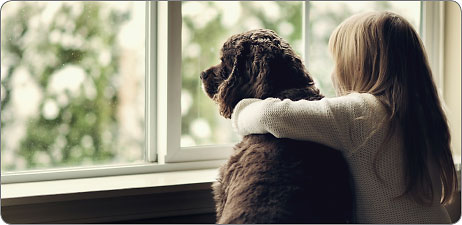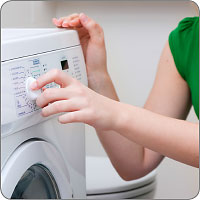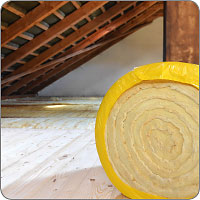Energy Efficiency

Did you know…
That proper equipment maintenance and upgrades with thermostat control, appropriate amount of insulation and air sealing, you can reduce your energy use for heating and cooling, and reduce the impact on the environment?
Find out more
Improve your household’s energy efficiency
by trying these no-cost or low-cost tips:
- Set thermostats between 65 to 70° during the winter and lower, such as 58° when away from home. You may need to keep the thermostat higher if an infant, ill or elderly person lives in your home. Programmable thermostats that turn down temperature automatically help save energy.
- Install weatherstrip around windows near your thermostat and keep them tightly closed. A cold draft across the thermostat will turn your heating system on unnecessarily.
- Have your heating and cooling systems inspected annually by a qualified professional. Inefficient heating and cooling systems can increase fuel consumption.
- Warm air rises, so use registers to direct warm air flow across the floor.
- Lower your thermostat at night either manually or automatically with a setback thermostat.
- Keep heating supply / return registers and radiators clean and unobstructed by furniture and draperies.
- Close all heat registers in unused rooms. (CAUTION: To protect pipes in these rooms, make sure the temperature stays above freezing.)
- Check for leaks in duct work. Leaks can usually be repaired easily and inexpensively with duct tape available at most hardware stores.
- Insulate ducts and pipes that run through unheated areas.
- Change or clean heating filters monthly during heating season. Tip: Your monthly gas bill can be a reminder.
- Close the fireplace damper when not in use.
- To keep air from leaking under a door, roll up a small rug and place it across the bottom of the doorway.
- Open draperies on south-facing windows during the day to let in free heat from the sun and close them at night or on cloudy days to keep the heat in.
- On a regular basis, hire a qualified specialist to inspect your chimney, flues and vents to ensure they are clear and working properly.
The Kitchen
Your Range
- When necessary, pre-heat your oven for no more than 10 minutes.
- Resist peeking into the oven. Every time you open the door, you lose heat.
- Check all range burners. If the flame on your natural gas stove burns with a yellow rather than a clear blue flame, improper combustion is occurring. Something may be clogging the burner outlets or burner air inlets. Turn off the natural gas, remove the burner and clean these areas with a wire pipe cleaner and vacuum cleaner. If this doesn’t improve the color of the flame, call a service person.
- Use flat-bottomed pans with covers and match the size of the pots and pans to the size of your burners. Also, minimize the amount of water in pans and use the lowest heat setting needed.
- Carefully plan use of the oven. When possible, avoid using range burners that are less efficient than a closed oven. A complete meal can be cooked in the oven as economically as one food item.
Other Kitchen Appliances
- Use the dishwasher only when full. In addition, let clean dishes air dry.
- Install a flow restrictor in the kitchen sink faucet to reduce the use of hot water.
- Use cold water rather than hot when operating your food disposer.
The Bath & Laundry
- Take showers rather than baths. A typical shower requires only half as much hot water as an average bath.
- Repair leaky faucets. One drop per second can waste as much as 10 gallons of water in a week. If the water is hot, you lose not only the water but also the energy used to heat the water.
- Install water flow restrictors on your shower heads and faucets to reduce your water use.
 Operate washers and dryers with full loads to make best use of warm water or warm air. See the manufacturer’s literature to determine the maximum load.
Operate washers and dryers with full loads to make best use of warm water or warm air. See the manufacturer’s literature to determine the maximum load.- Wash clothes in hot water only when necessary. Always use cold water for rinsing.
- Clean the lint screen on your dryer after each use to keep it running efficiently. Also check the dryer exhaust periodically to be sure it is not blocked.
- Check clothes to determine when dry and stop the cycle.
- Hang your laundry outdoors to dry. The fewer times you use your clothes dryer, the less energy you’ll use.
- Use your bath and kitchen exhaust fans sparingly. In just one hour they can remove a houseful of warmed or cooled air.
The Water Heater
- Periodically remove sediment that builds up in the bottom of your water heater. Draining water until it appears clear removes sediment and improves your water heater’s efficiency. (Follow manufacturer’s instructions.)
- Set the temperature on low (120°) and use warm instead of hot water for washing clothes and dishes. However, a temperature lower than 120° may result in increased detergent use. (Note: Dishwashers without booster heaters may require a water temperature of 140°. Check manufacturer’s instructions.)
- Ensure maximum efficiency of your water heater. Have a qualified service person inspect the flame, damper, and stack temperature.
Did you know…
There are four ways to cut your water heating bills: use less hot water, turn down the thermostat on your water heater, insulate your water heater, or buy a new, more efficient water heater.
The Attic
 Assure good insulation in your attic. Homes in our area should have insulation with an insulation value of R-19.
Assure good insulation in your attic. Homes in our area should have insulation with an insulation value of R-19.- Insulate and weatherstrip your attic door.
- Install a vapor barrier in your attic to reduce the flow of moisture from inside your home through the insulation. This reduces condensation that can lower insulation efficiency. When installing vapor barriers, be sure to follow the manufacturer’s instructions.
- Vent your attic appropriately. When adding insulation, you may have to add ventilation as well. As a general rule, you need one square foot of free ventilating area for each 150 square feet of attic floor area. Keep attic vents clear of debris such as insulation, tree limbs, bird nests, etc.
The Basement
- Check masonry walls and seal any cracks discovered.
- Insulate basement walls, especially those portions above the ground, and the rim joist where the basement ceiling joists meet the foundation wall.
- Insulate between floor joists over unheated areas.
- Insulate crawl spaces under heated areas.
